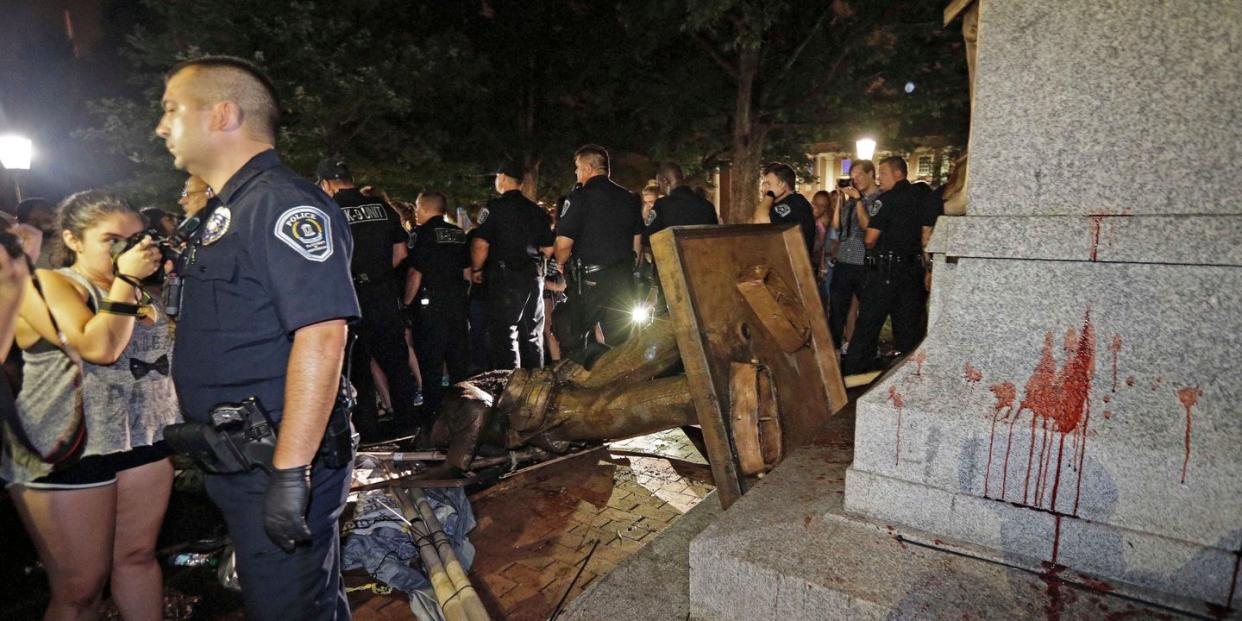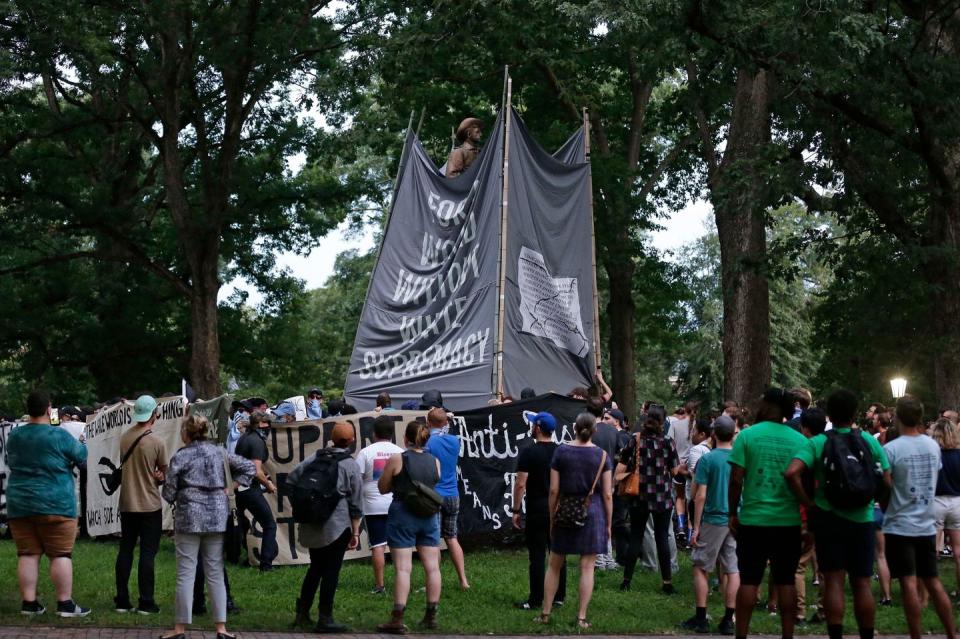Silent Sam Wasn't a Confederate Memorial, It Was a Monument to Lynching and Jim Crow

On August 26, 1913, in Mecklenburg County in North Carolina in the United States of America, a mob of some 35 white men descended on Good Samaritan Hospital in Charlotte and dragged an African-American man named Joseph McNeely out into the street practically naked and riddled him with bullets. (McNeely had been accused of wounding a local policeman.) The Charlotte Observer's account of events noted that there had been a "mysterious delay" in transferring McNeely from the hospital to the county jail, and that this mysterious delay "was of great assistance in making the lynching a possibility."
Two months earlier, on June 2, a statue of an anonymous Confederate soldier had been dedicated on the campus of the University of North Carolina. At the dedication, an industrialist and Confederate veteran Julian Carr delivered the address, saying, in part:
The present generation, I am persuaded, scarcely takes note of what the Confederate soldier meant to the welfare of the Anglo Saxon race during the four years immediately succeeding the war, when the facts are, that their courage and steadfastness saved the very life of the Anglo Saxon race in the South – When “the bottom rail was on top” all over the Southern states, and to-day, as a consequence the purest strain of the Anglo Saxon is to be found in the 13 Southern States – Praise God.
I trust I may be pardoned for one allusion, howbeit it is rather personal. One hundred yards from where we stand, less than ninety days perhaps after my return from Appomattox, I horse-whipped a negro wench until her skirts hung in shreds, because upon the streets of this quiet village she had publicly insulted and maligned a Southern lady, and then rushed for protection to these University buildings where was stationed a garrison of 100 Federal soldiers. I performed the pleasing duty in the immediate presence of the entire garrison, and for thirty nights afterwards slept with a double-barrel shot gun under my head.
This was in a public address. Presumably, people applauded.

That's the history of Silent Sam, the statue pulled down Tuesday night by activists who decided that we have long enough honored treason in defense of slavery, and the horse-whipping of uppity black women, and the murder of African-American men by mobs. Because Silent Sam wasn't a memorial to the Confederate dead, it was a testimony to the new forms taken on by the evil for which they fought the war. It was a monument to Jim Crow, not to Chancellorsville, the marble manifestation of the lynching culture. I wish they'd taken the damn thing out into a field and blown it to smithereens.
(Thanks to Yoni Applebaum of The Atlantic for calling attention to the history of the statue in question on the electric Twitter machine Tuesday morning.)
Respond to this post on the Esquire Politics Facebook page here.
('You Might Also Like',)

